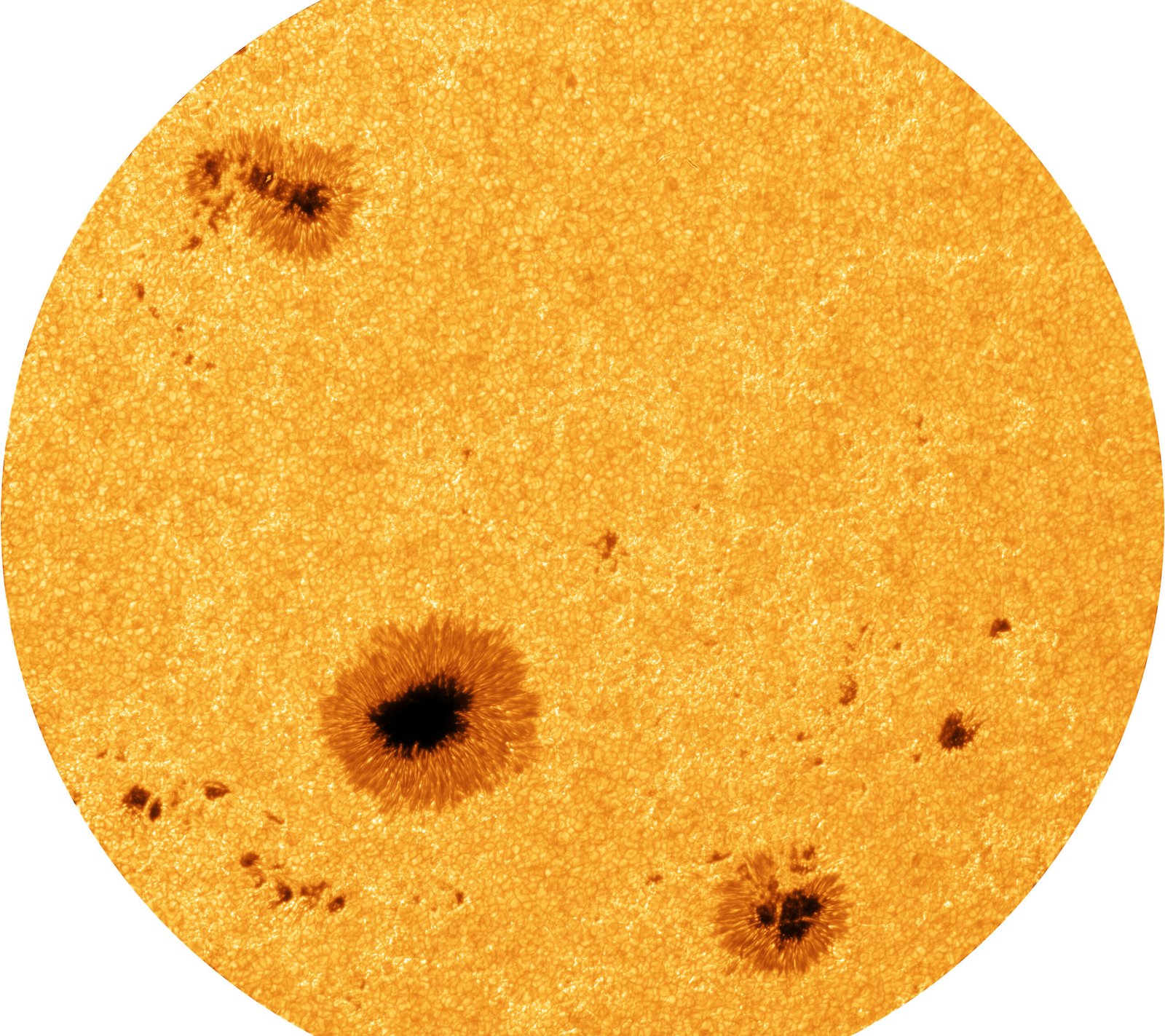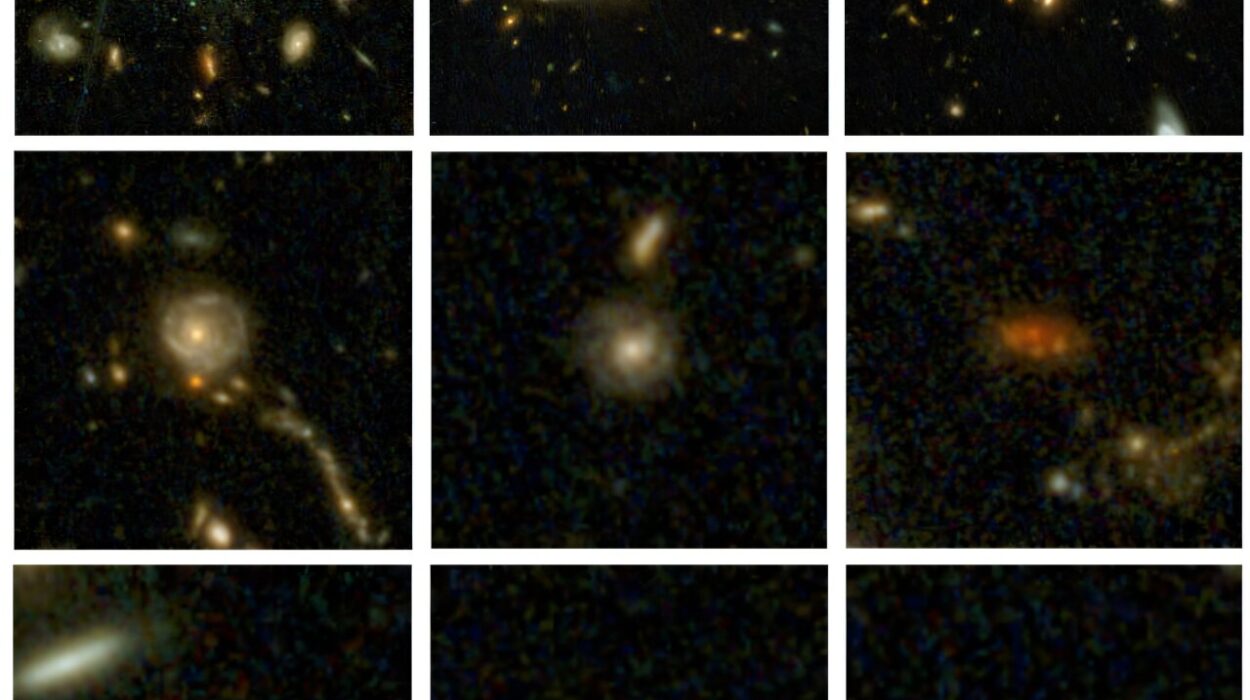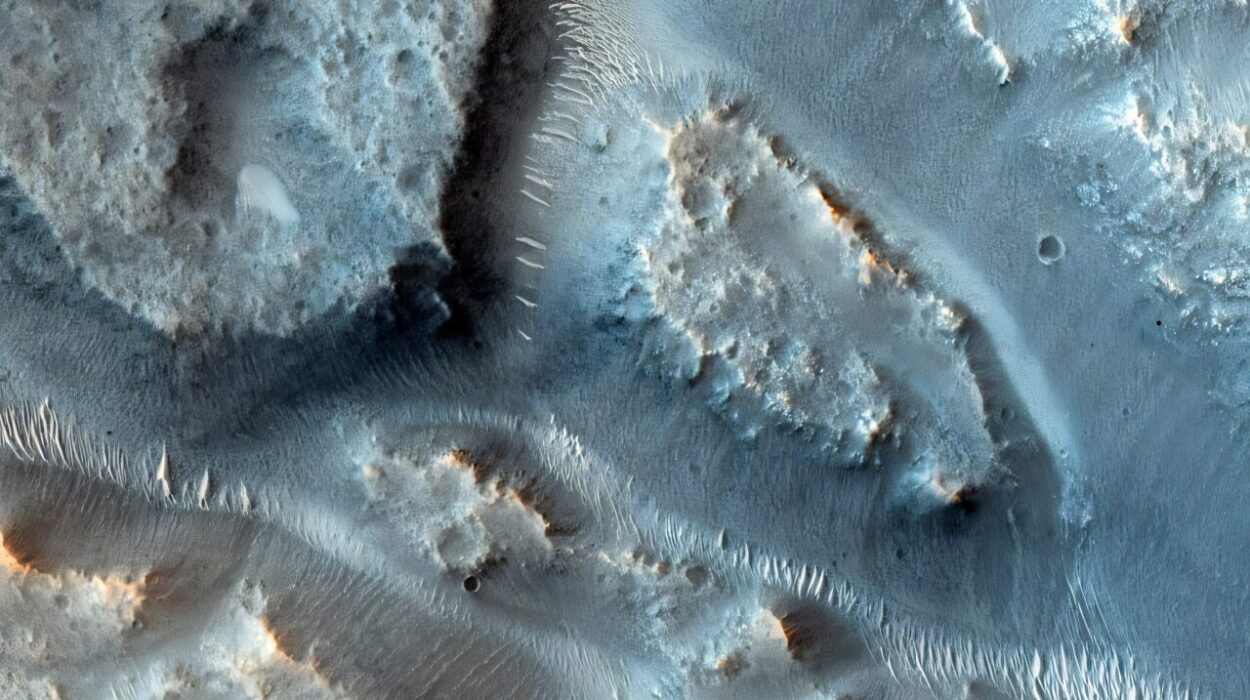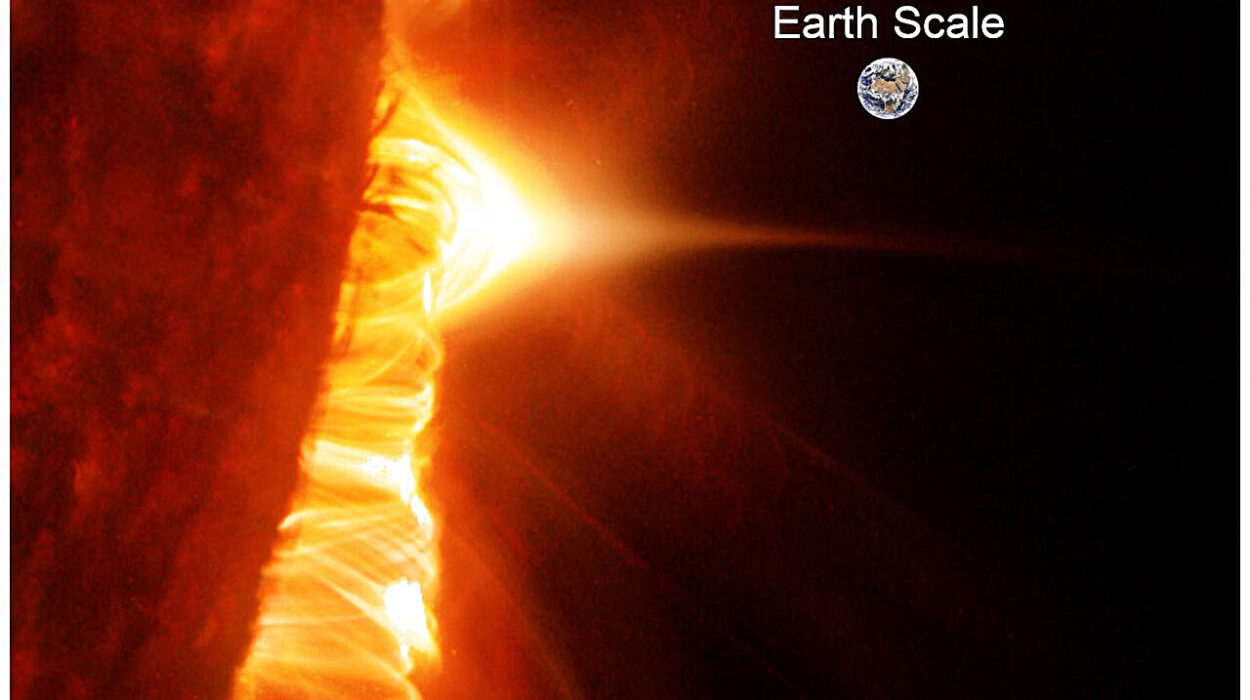The Sun—our cosmic furnace, life-giver, and at times, an unruly force—has always held a central place in human imagination and scientific inquiry. Despite its familiarity, the Sun remains an elusive and dynamic subject. Its surface, constantly in flux, is sculpted by intense magnetic fields, massive plasma flows, and explosive flares that ripple through the solar system. Now, a revolutionary new imaging system at the Vacuum Tower Telescope (VTT) on the island of Tenerife is offering scientists an unprecedented glimpse into the fine-scale structures of our star—images so sharp and revealing they are rewriting what we know about solar activity.
This groundbreaking system, developed by the Leibniz Institute for Astrophysics Potsdam (AIP), uses cutting-edge image restoration techniques to pierce through Earth’s turbulent atmosphere and deliver solar images at 8K resolution—revealing sunspots, magnetic filaments, and dynamic plasma flows in exquisite detail. Published in Solar Physics, this achievement marks a leap forward in observational solar science, enabling real-time tracking of processes that were previously impossible to resolve at this scale and speed.
Bridging the Gap Between Clarity and Context
Historically, solar telescopes have been caught in a trade-off. Large ground-based telescopes can zoom in to see incredibly small features—sunspots, granulation, flares—but their narrow field of view limits the ability to study broader patterns or the context in which these small-scale events unfold. On the other end of the spectrum, space-based observatories like SOHO and SDO provide full-disk solar images around the clock, tracking global changes but sacrificing the sharpness needed to capture the Sun’s fine-grained complexity.
Enter the VTT. Since 1988, this telescope at the Observatorio del Teide in Tenerife has carved out a unique observational niche. It combines a relatively wide field of view with high spatial resolution, enabling scientists to study both detailed local processes and large-scale active regions. Now, with the addition of AIP’s sophisticated 8K camera system, the VTT can do what few telescopes can: see the forest and the trees.
8K Resolution in Real Time: Teaching an Old Telescope New Tricks
What makes this new camera system revolutionary is not just the clarity of its images, but the speed and volume of data it can handle. Each restored image is constructed from 100 short-exposure frames, each boasting a massive 8,000 × 6,000 pixel count. These frames are recorded at a staggering 25 frames per second, allowing scientists to essentially freeze-frame the solar surface—even as it roils with magnetic and plasma activity.
This process—known as image restoration—compensates for distortions caused by Earth’s atmosphere. It’s akin to taking a rapid-fire burst of photographs and using sophisticated algorithms to extract the clearest possible version, free of atmospheric blurring. As a result, the VTT can now achieve its theoretical limit of spatial resolution: seeing features as small as 100 kilometers across on the Sun’s surface, or about the size of a small city on Earth.
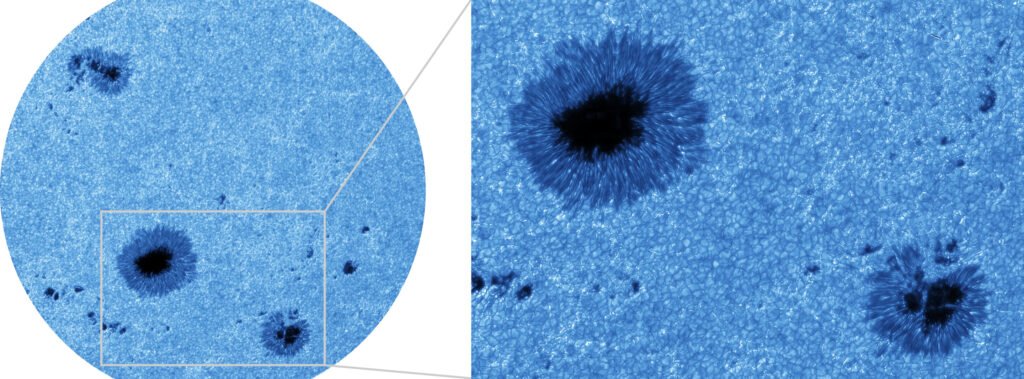
Time-lapse sequences composed of these restored images provide an added bonus. Scientists can now study how solar structures evolve in time intervals as short as 20 seconds—an essential step toward understanding dynamic phenomena like solar flares and magnetic field shifts.
A Closer Look at Solar Complexity: From Sunspots to Supergranulation
In one of its earliest observational campaigns using the new system, the VTT captured images of a complex and highly active solar region that spanned nearly 1/7 of the Sun’s diameter—roughly 200,000 kilometers across. Within this sprawling canvas, scientists observed massive sunspot groups, intricate penumbral filaments, and the interplay of magnetic fields and plasma flows across multiple layers of the solar atmosphere.
The images were taken in the G-band at 430.7 nanometers—a wavelength ideal for studying the photosphere—and in the Ca II K line at 393.3 nanometers, which captures phenomena at the boundary between the photosphere and the chromosphere. These wavelengths revealed a hidden architecture: sunspots nested within vast convective cells called supergranules, and twisted magnetic filaments whose orientation hinted at underlying magnetic shear and stored energy. It was this very energy, researchers found, that unleashed three major solar flares and multiple smaller ones within the active region.
By using special optical filters, the camera system could also detect faint magnetic field signatures, which appeared as bright or dark structures depending on polarity and orientation. These minute details are essential for space weather forecasting—helping scientists predict when solar eruptions may strike Earth and disrupt satellites, communication networks, or even power grids.
A Network of Precision Instruments: Synergy at the VTT
The new imaging system doesn’t stand alone. It complements a suite of advanced instruments at the VTT, each providing different but crucial insights into the Sun’s behavior. Among them:
- HELLRIDE (HELioseismic Large Region Interferometric Device) focuses on helioseismology, using Doppler shifts to study sound waves propagating through the Sun’s interior.
- LARS (Laser Absolute Reference Spectrograph) provides highly precise spectral measurements, allowing researchers to detect minute changes in solar velocity and composition.
- FaMuLUS (Fast Multi-line Universal Spectrograph) captures spectra across multiple wavelengths simultaneously, offering a multifaceted view of different atmospheric layers.
Together with the new 8K camera system, these instruments allow for the multidimensional study of solar processes—combining spatial, temporal, and spectral data to reveal how surface features relate to deeper forces and long-term activity cycles.
The Magnetic Dance: Why Solar Activity Matters
Why devote such effort to imaging the Sun in high definition? Because solar activity is not just a matter of academic interest—it has direct consequences for life on Earth. Sunspots, solar flares, and coronal mass ejections are all manifestations of tangled magnetic fields in the Sun’s atmosphere. These events can fling charged particles into space, disturb Earth’s magnetic shield, and trigger geomagnetic storms that affect everything from navigation systems to airline flights to astronaut safety.
As Rolf Schlichenmaier of the Kiepenheuer Institute for Solar Physics (KIS) puts it, “To better understand solar activity, we must investigate not just the fine structure and long-term development of solar regions, but also their temporal magnetic evolution.” It’s a puzzle with many pieces, and the new VTT system helps bring those pieces into sharper focus.
By watching how magnetic fields twist, merge, and erupt across broad solar regions, scientists can begin to decode the chain reactions that lead to solar flares or particle storms. In turn, this can improve our models of space weather and help mitigate its impact on modern technology.
From Tenerife to the Future: A New Standard in Solar Imaging
For Robert Kamlah, a PhD researcher at AIP and the University of Potsdam who led the camera project, the results exceeded all expectations. “Our expectations of the camera system were more than fulfilled right from the start,” he said. “We can now visualize the relationship between sunspots and large-scale convective patterns like supergranulation in a way that was simply not possible before.”
Looking ahead, the implications of this technology extend beyond the VTT. Future solar telescopes—including next-generation 4-meter class observatories—are expected to incorporate similar high-resolution CMOS camera systems. These will triple the field of view compared to older 4K systems and offer faster frame rates, higher sensitivity, and greater flexibility.
This democratization of high-resolution imaging could help establish a global network of solar observatories capable of both continuous monitoring and pinpoint analysis. Imagine a world where scientists can observe solar storms as they form, trace their development in near-real time, and issue alerts with greater lead time and precision. That vision begins with tools like the one now installed at the VTT.
Conclusion: Capturing the Living Sun
The Sun is not a static ball of fire but a living, breathing star—roiling with motion, magnetic complexity, and violent outbursts. To understand it, we need not only powerful telescopes but also smart systems that can capture its behavior with clarity, speed, and scale. The new camera at the Vacuum Tower Telescope exemplifies this blend of innovation and scientific vision.
By resolving features down to 100 kilometers and tracking their evolution in 20-second intervals, scientists are now able to witness the birth of sunspots, the writhing of magnetic fields, and the roots of solar flares with a clarity once reserved for science fiction.
As Carsten Denker, head of the AIP’s Solar Physics Section, aptly put it: “We are teaching an old telescope new tricks.” And in doing so, we are not only transforming our understanding of the Sun—we are lighting the path to safer skies, better forecasts, and a deeper connection with our cosmic neighbor.
Reference: Robert Kamlah et al, Wide-Field Image Restoration of G-Band and Ca ii K Images Containing Large and Complex Active Regions, Solar Physics (2025). DOI: 10.1007/s11207-025-02472-6
